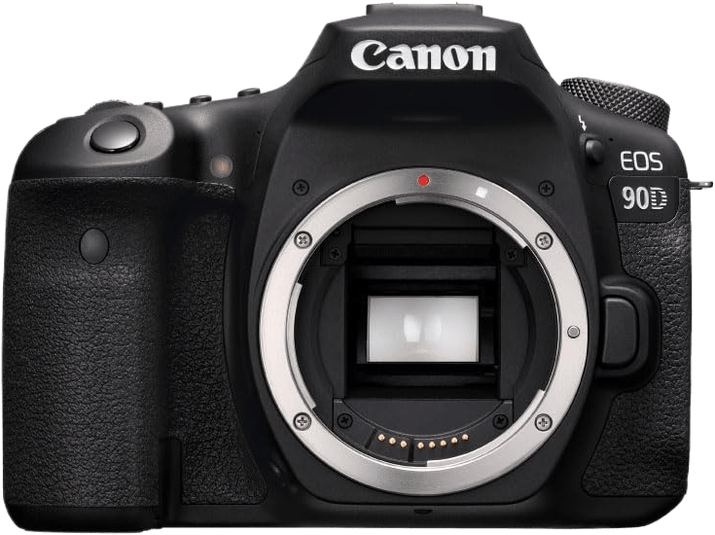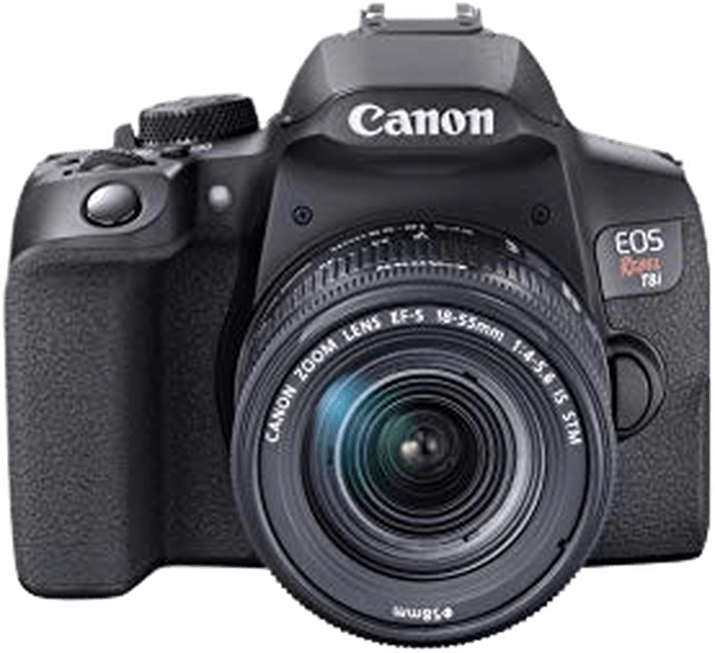Canon EOS 90D vs EOS Rebel T8i / 850D Comparison
Canon EOS 90D

Canon EOS Rebel T8i / 850D

The Canon EOS 90D outperforms the Canon EOS Rebel T8i/850D with a score of 67/100 compared to 59/100. Both cameras are DSLRs released in 2019 and 2020, respectively. They share similarities in their sizes, with the EOS 90D measuring 141 x 105 x 77mm and the EOS Rebel T8i/850D measuring 131 x 103 x 76mm.
The EOS 90D’s higher score reflects its superior performance. It is a heavier camera, weighing 701g (1.55lbs), which may indicate a more robust build. On the other hand, the EOS Rebel T8i/850D weighs 515g (1.14lbs), making it a lighter and more portable option.
Despite the EOS 90D’s higher score, the EOS Rebel T8i/850D has an advantage in terms of price, launching at $750 compared to the EOS 90D’s $1199. This makes the EOS Rebel T8i/850D a more budget-friendly choice for those seeking a capable DSLR.
Taking these factors into account, the Canon EOS 90D offers better performance and durability, while the Canon EOS Rebel T8i/850D provides a more affordable and portable option for photographers.
Canon EOS 90D vs EOS Rebel T8i / 850D Overview and Optics
The Canon EOS 90D emerges as the winner in optics with a score of 62/100, while the Canon EOS Rebel T8i / 850D scores 57/100. Both cameras have their strengths and weaknesses, which we will discuss in detail.
Firstly, the common specifications between the two cameras include the CMOS sensor type, Digic 8 processor, DXOMARK sensor score of 58, APS-C sensor size, Canon EF/EF-S lens mount, and the lack of image stabilization. These similarities ensure that both cameras deliver quality images and share compatibility with a wide range of Canon lenses.
The EOS 90D outperforms the Rebel T8i in two key areas: megapixels and shooting speed. Boasting 33 megapixels, the 90D captures more detail in images, making it suitable for large prints and cropping without losing quality. Additionally, its shooting speed of 10 frames per second (fps) enables photographers to capture fast-moving subjects with ease, making it an ideal choice for sports and wildlife photography.
On the other hand, the Rebel T8i has a lower megapixel count of 24, which is still sufficient for most casual and enthusiast photographers. Its shooting speed of 7.5 fps, while slower than the 90D, is still adequate for capturing most subjects, except for extremely fast action shots.
In conclusion, the Canon EOS 90D is the superior camera in terms of optics due to its higher megapixel count and faster shooting speed. However, the EOS Rebel T8i / 850D remains a viable option for those who do not require the extra resolution and speed, while still benefiting from the shared specifications between the two cameras.
Canon EOS 90D vs EOS Rebel T8i / 850D Video Performance
The Canon EOS 90D outperforms the Canon EOS Rebel T8i/850D in video capabilities, scoring 91/100 compared to the T8i’s 83/100. Both cameras share several video specifications, including a maximum video resolution of 4K and dimensions of 3840 x 2160. Additionally, they both offer time-lapse functionality built-in, providing users with creative options for capturing moving subjects.
The EOS 90D takes the lead in video performance, primarily due to its higher maximum video frame rate of 120fps, compared to the T8i’s 60fps. This higher frame rate enables smoother slow-motion footage and provides more flexibility when editing videos. The 90D’s advantage in this area makes it a more suitable choice for videographers who require advanced video capabilities.
On the other hand, the EOS Rebel T8i/850D does not surpass the 90D in any specific video aspect. However, it still maintains solid video performance, making it a viable option for amateur videographers or those who do not require the additional frame rate capabilities of the 90D.
Comparing the two cameras, the Canon EOS 90D clearly excels in video performance due to its higher maximum video frame rate. This advantage makes it a top choice for professionals or enthusiasts who prioritize advanced video capabilities. Meanwhile, the Canon EOS Rebel T8i/850D remains a strong contender with its similar video specifications, catering to those who may not require the 90D’s extra video performance features.
Canon EOS 90D vs EOS Rebel T8i / 850D Features and Benefits
The Canon EOS 90D outperforms the Canon EOS Rebel T8i / 850D with a feature score of 83/100 compared to 70/100. Both cameras share several specifications, including a 3-inch screen size, a screen resolution of 1,040,000 dots, touchscreen capabilities, flip screens, and no GPS. Additionally, both cameras offer WiFi and Bluetooth connectivity.
The EOS 90D’s higher score highlights its superiority in terms of features. This camera provides better performance and functionality, making it a more versatile and efficient choice for photographers. Its advanced features cater to a wide range of photography styles and situations, making it suitable for both amateurs and professionals.
On the other hand, the EOS Rebel T8i / 850D, despite its lower score, is still a strong contender. While it may not offer as many advanced features as the EOS 90D, it still delivers quality performance and is a reliable option for those looking for a more budget-friendly camera. Its shared specifications with the EOS 90D ensure that users can still enjoy a high-quality photography experience without breaking the bank.
In comparing the two cameras, the Canon EOS 90D takes the lead with its higher feature score and advanced capabilities. It is a more powerful and versatile camera that caters to a broader range of photographers. However, the Canon EOS Rebel T8i / 850D remains a viable option for those seeking a more affordable camera without compromising on essential features and performance.
Canon EOS 90D vs EOS Rebel T8i / 850D Storage and Battery
The Canon EOS 90D outperforms the Canon EOS Rebel T8i/850D in storage and battery with a score of 48/100 compared to the latter’s 35/100. Both cameras share common specs, such as having a single memory card slot and no USB charging. Both accept SD, SDHC, and SDXC memory cards.
However, the 90D has an advantage with UHS-II compatibility, allowing faster read and write speeds. Furthermore, the 90D boasts a remarkable battery life of 1300 shots using the LP-E6N battery, significantly outlasting the T8i/850D’s 800 shots with its LP-E17 battery.
On the other hand, the T8i/850D does not have any notable advantages in storage and battery over the 90D. In terms of these aspects, the Canon EOS 90D proves to be the superior choice, offering better performance and longer battery life for photographers.
Canon EOS 90D vs EOS Rebel T8i / 850D Alternatives
Still not ready to make a decision? Check out our other popular camera comparisons for inspiration:
